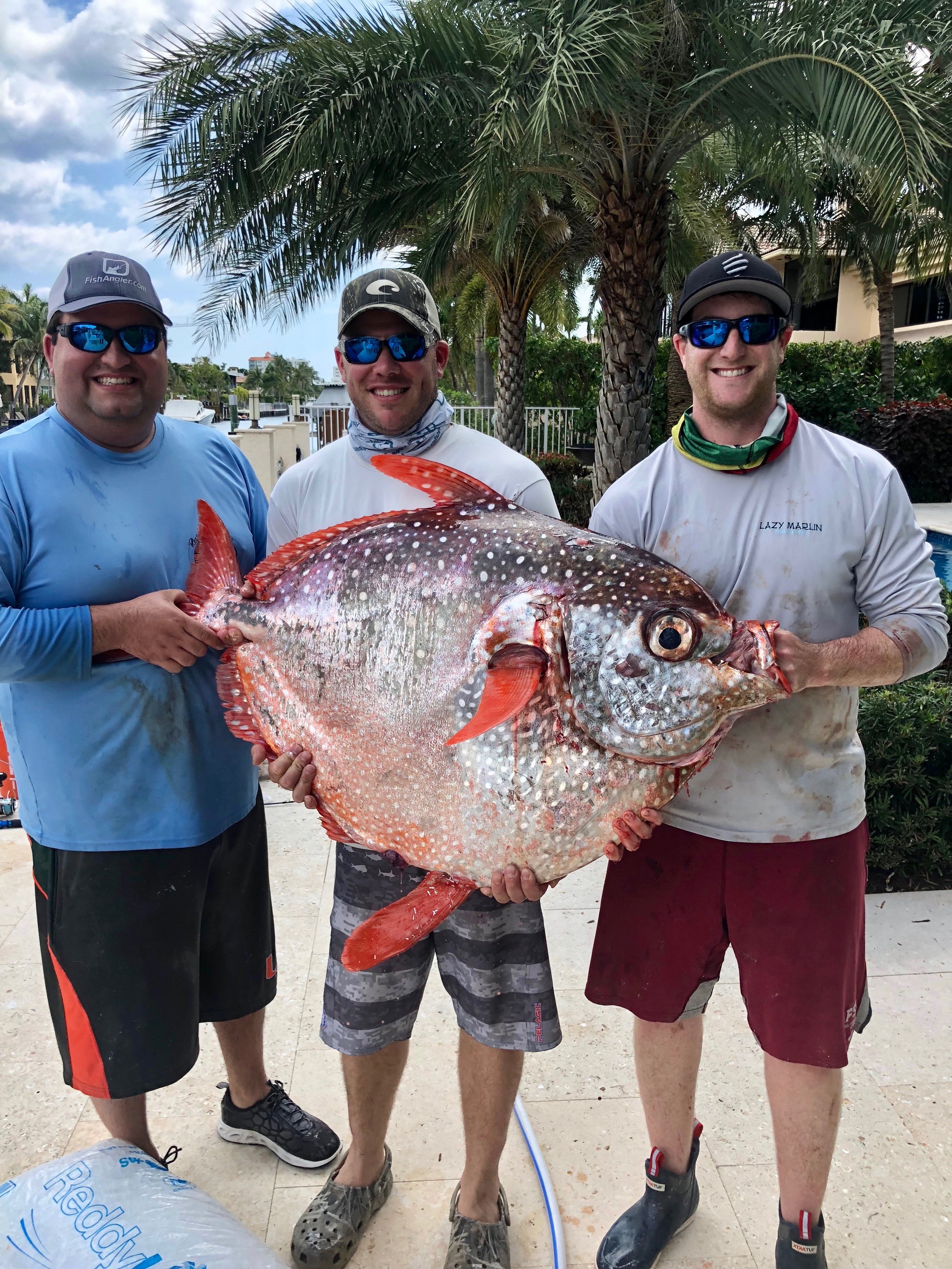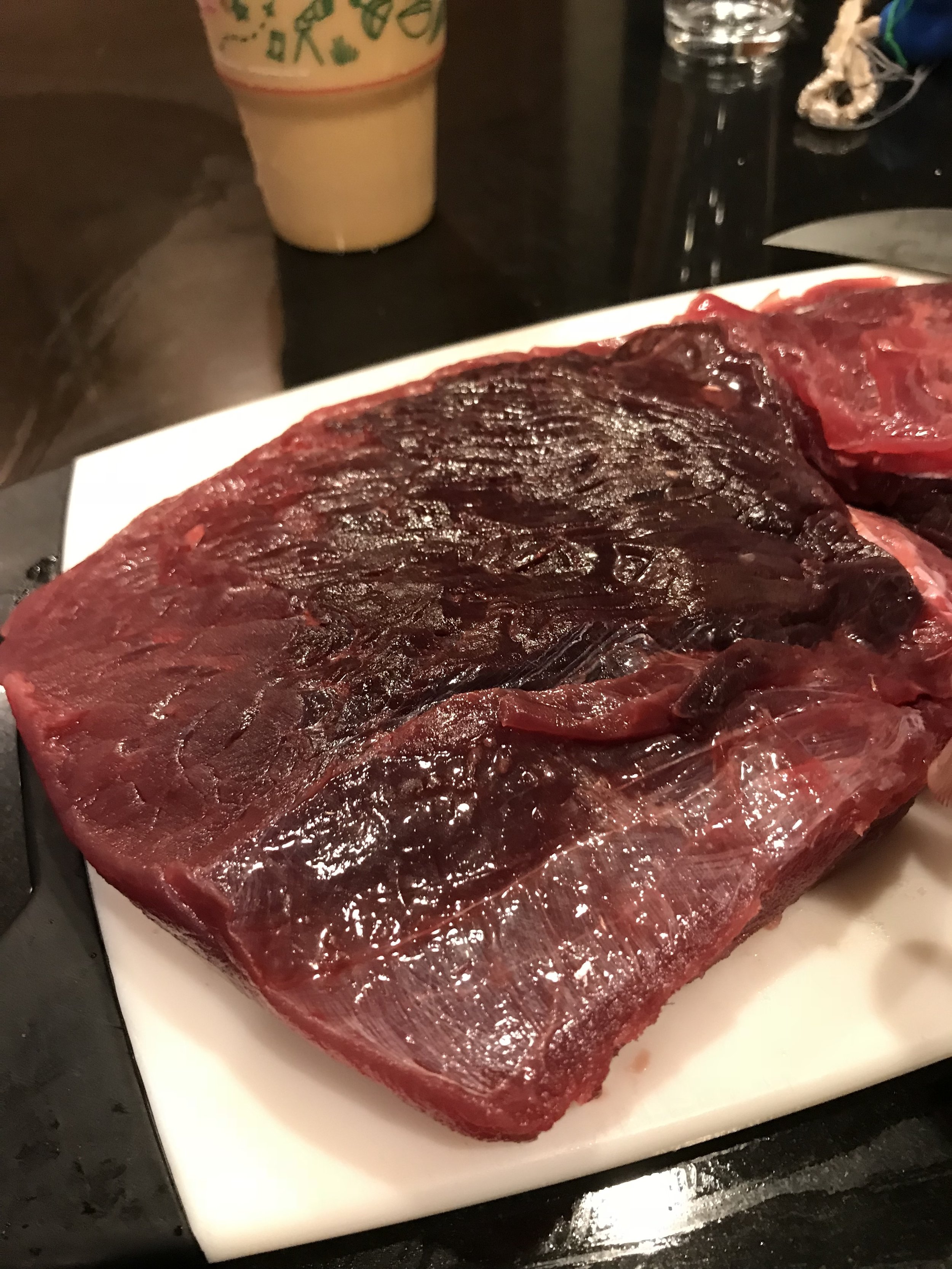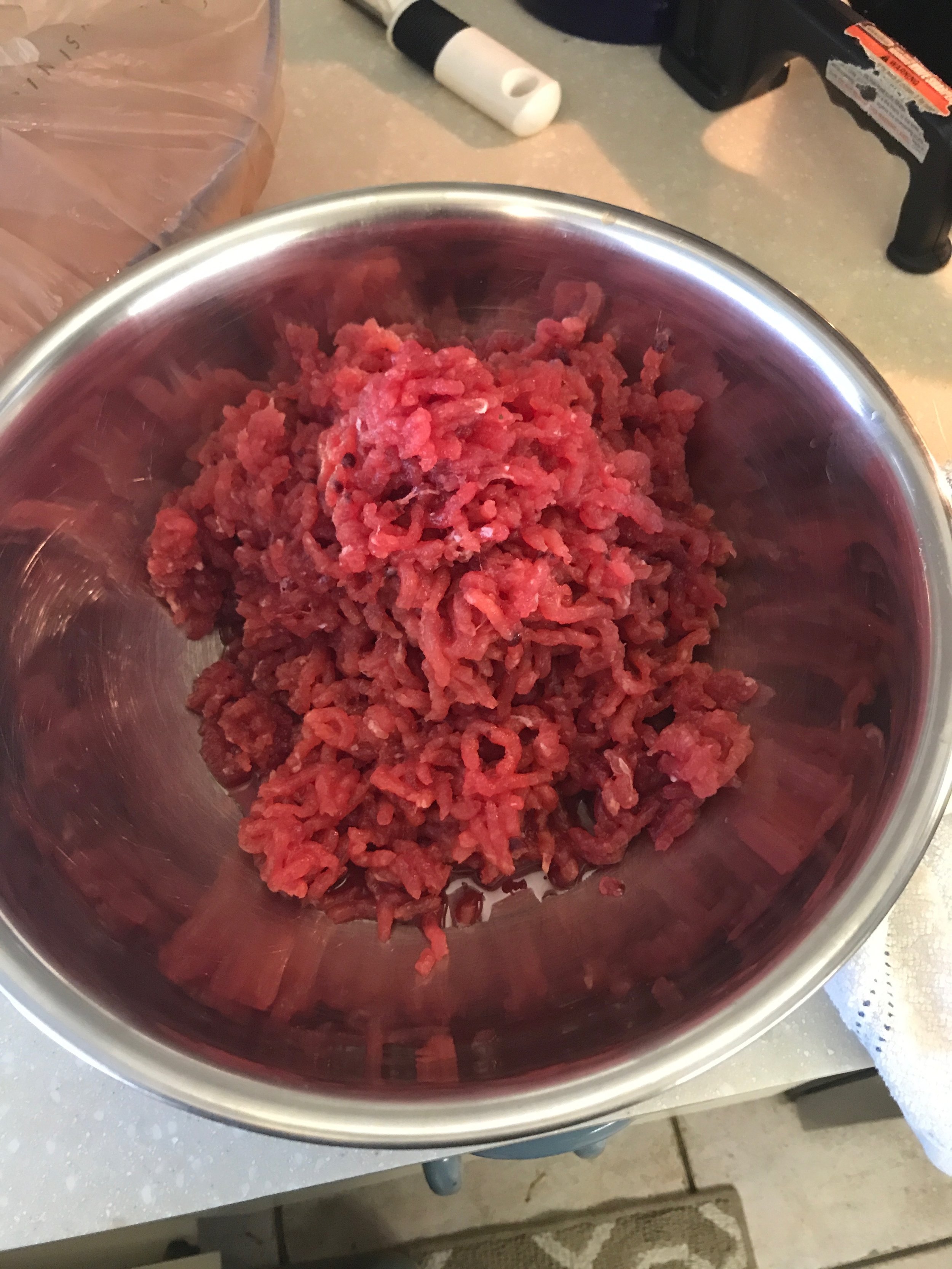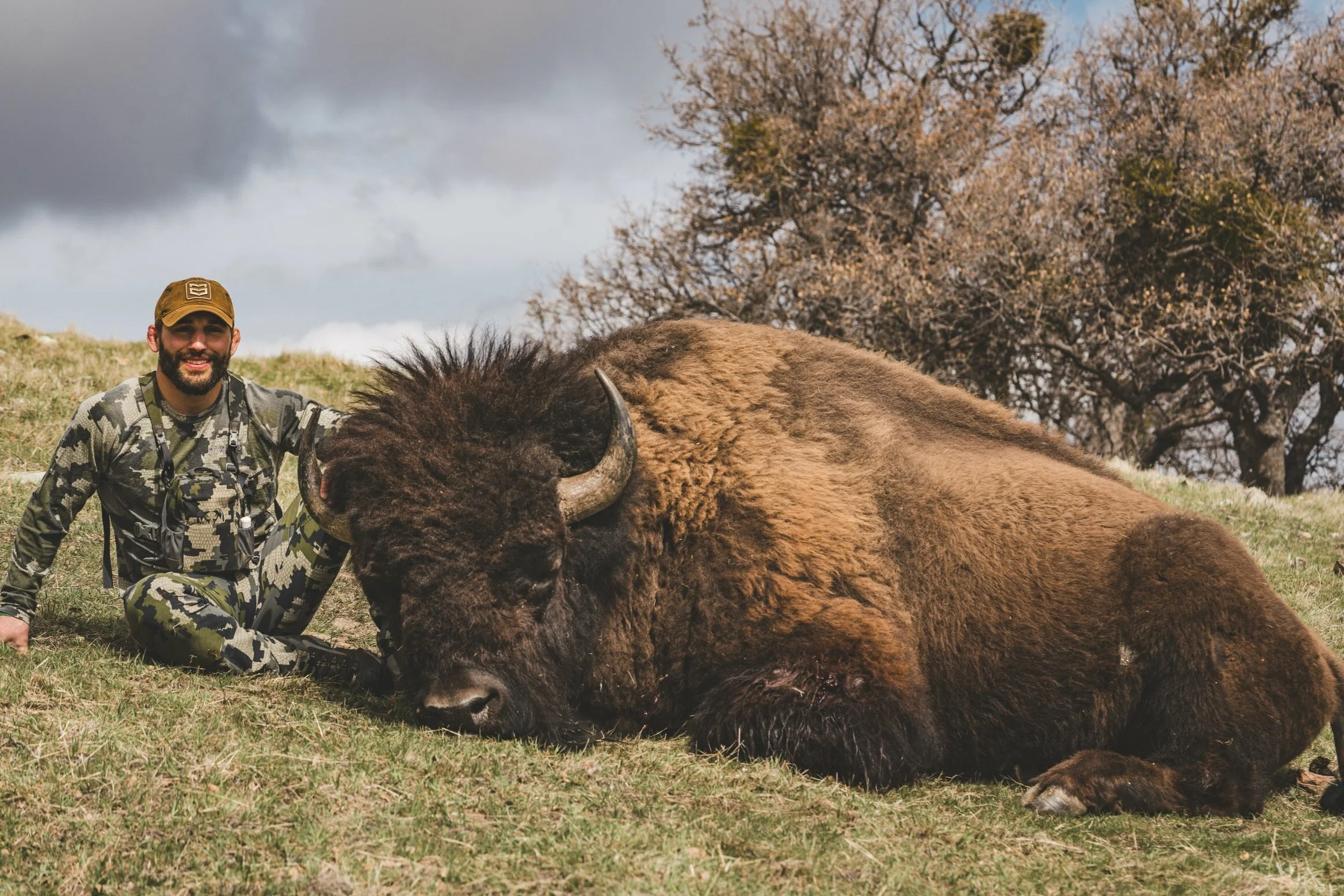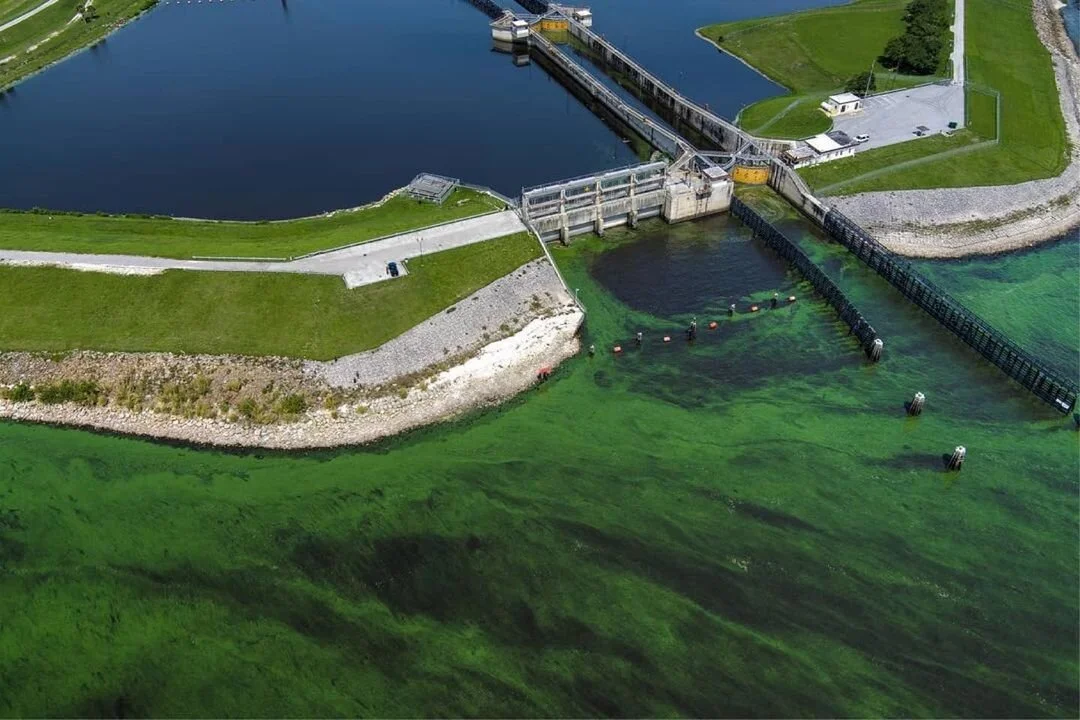Rare Opah Off Ft Lauderdale
Geoff Arias Caught This Opah Off Ft Lauderdale While Swordfishing
I thought that the Opah was only found in the Pacific Ocean, but I was wrong. My friend, Geoff Arias sent me a picture today of an Opah. (You may remember Geoff...we shot a TV show together and you can see that here.) When I first looked at it, I thought that he had probably taken a trip to Hawaii. Then, I looked back at the text and saw that it was not caught in Hawaii but rather, off the coast of Ft Lauderdale.
The Opah is a beautiful, weird and delicious fish that is found in both oceans. One thing that makes it weird or unique is that it is a warm blooded fish. I would not have known this if I had not read this article . In the article the author says:
"The opah’s wonderful nets are in its gills, and that makes all the difference. The blood vessels carrying warm blood from heart to gills flows next to those carrying cold blood from the gills to the rest of the body, warming them up. So, while a tuna or shark might isolate its warm muscles from the rest of its cold body, the opah flips this arrangement. It isolates the cold bits—the gills—from everything else.
This allows its huge pectoral muscles, which generate most of its heat, to continuously warm the rest of its body. It also keeps that heat with the help of thick layers of fat, which insulate the heart from the gills, and the pectoral muscles (which produce most of the animal’s heat) from the surrounding water.”
Wegner’s team confirmed this by catching opah, implanting them with small thermometers, and then releasing them. The instruments inside the fish recorded consistently higher temperatures than those dropped into the surrounding water. The opah’s brain is warm. Its muscles are warm. And perhaps most importantly, its heart is warm—a first for a fish. Not even a great white shark has a warm heart. “That’s why opah can stay at depth,” says Wegner. “These guys are specialised for living deeper than those other predators.”
Geoff sent me a recap of this catch:
"Sunday’s game plan was just like most of any other trip to the Gulfstream in search of our first swordfish. I met my buddies Mitchell and Alex at their boat, The Lazy Marlin, a beautiful 370 SeaVee and where we spend most weekends together. We cleared Port Everglades before the sun was up in hopes setting up and dropping our first bait as the sun was coming up on the horizon. After some debate about whether the bait looked worthy of dropping down, we setup in 1,700 feet of water and send the bait down to the depths. I took the first turn manning the LP while Alex manned the helm and Mitchell deployed the bait. As we hit about 1,400 feet down, I noticed some slowing down in the rate at which the line coming off the reel. By 1,500 feet the rest of the crew noticed it and we let it sit and the rod just didn’t have the bounce it normally does. We were pretty sure we had something on, but just weren’t sure. There was no “bite” to speak of. But sure enough, we put the LP in gear and the rod loads up. The fish never pulled any drag, and fearing we may pull the hook; we back off the drag as the fish got closer to the boat. Guesses were taken regarding what could be on the end of the line. Swordfish was the target, yellowfin was agreed to be a great consolation prize, but in the deep drop game you never know for sure until its boat side. Not surprisingly, no one guessed Opah. 300 feet down the fish did some circles beneath the boat and Alex did a great job ensuring the line stayed parallel to the boat. After a few seconds getting the weight off which felt like an eternity, we are 90 feet away from the catch of a lifetime. We get color and Alex immediately yells ‘Get it Mitch, that’s an Opah!”. Mitchell lands a solid gaff shot and after second gaff the fish comes over the rails and onto the deck. Knowing very little about the fish, we didn’t realize the rarity of what we had just caught. I knew of the value of the meat from a friend who had recently went to Hawaii and told me about it but beyond that we weren’t sure what to do. Once we got back in and weighed it at the dock (85 lbs) and talked to several people, we began to realize just how rare and what a catch of a lifetime this was.”
The question most everyone asks is, “Did you eat it and what’s the meat like?” The fish is very unique in that the types and cuts of meat off the fish range from fatty, belly meat to tuna like loins and a pectoral muscle with the appearance of brisket that looks anything but appetizing as seafood. After some Googling, I located some info from a group in San Diego that is using Opah in their restaurants. The fish has almost no fishy smell and the taste is extremely mild. The loin, served tatake style, almost lacks flavor if you don’t provide enough seasoning. I decided to grind up the pectoral muscle, which I had read should be treated and cooked like you would beef, and made some burgers. I invited a few friends over to enjoy and the consensus was, “If you told me this was a regular burger, I would have had no reason to even question it”.
It has been a great few days sharing the spoils and story from the fish of a lifetime with friends and family. Thanks to my good friends on the Lazy Marlin for another great trip and memories that will last a lifetime."
-Geoff Arias


